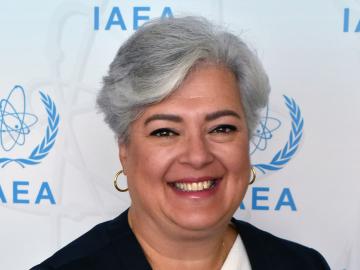
Filter News
Area of Research
- Advanced Manufacturing (1)
- Biology and Environment (40)
- Biology and Soft Matter (1)
- Building Technologies (2)
- Clean Energy (28)
- Computational Biology (1)
- Fusion and Fission (7)
- Isotopes (2)
- Materials (17)
- Materials for Computing (3)
- National Security (17)
- Neutron Science (5)
- Renewable Energy (1)
- Supercomputing (23)
News Type
Date
News Topics
- 3-D Printing/Advanced Manufacturing (6)
- Advanced Reactors (1)
- Artificial Intelligence (7)
- Big Data (7)
- Bioenergy (17)
- Biology (21)
- Biomedical (5)
- Biotechnology (2)
- Buildings (12)
- Chemical Sciences (6)
- Clean Water (5)
- Climate Change (24)
- Composites (3)
- Computer Science (13)
- Coronavirus (7)
- Critical Materials (3)
- Cybersecurity (3)
- Decarbonization (15)
- Energy Storage (8)
- Environment (30)
- Exascale Computing (4)
- Frontier (4)
- Fusion (4)
- Grid (6)
- High-Performance Computing (11)
- Hydropower (8)
- Irradiation (1)
- Isotopes (2)
- ITER (1)
- Machine Learning (6)
- Materials (19)
- Materials Science (7)
- Mercury (1)
- Microscopy (10)
- Nanotechnology (5)
- National Security (10)
- Net Zero (2)
- Neutron Science (5)
- Nuclear Energy (3)
- Partnerships (2)
- Physics (3)
- Polymers (2)
- Quantum Computing (5)
- Quantum Science (5)
- Security (2)
- Simulation (5)
- Space Exploration (3)
- Summit (5)
- Sustainable Energy (19)
- Transportation (5)
Media Contacts

Researchers at ORNL explored radium’s chemistry to advance cancer treatments using ionizing radiation.

A multi-lab research team led by ORNL's Paul Kent is developing a computer application called QMCPACK to enable precise and reliable predictions of the fundamental properties of materials critical in energy research.

Researchers from ORNL, the University of Tennessee at Chattanooga and Tuskegee University used mathematics to predict which areas of the SARS-CoV-2 spike protein are most likely to mutate.

When Bill Partridge started working with industry partner Cummins in 1997, he was a postdoctoral researcher specializing in applied optical diagnostics and new to Oak Ridge National Laboratory.

Countries around the world have unique languages, cultures, food, entertainment and governments. Yet, more than 170 countries are finding common ground in an unlikely field: nuclear material and science.

Five National Quantum Information Science Research Centers are leveraging the behavior of nature at the smallest scales to develop technologies for science’s most complex problems.

Oak Ridge National Laboratory physicist Elizabeth “Libby” Johnson (1921-1996), one of the world’s first nuclear reactor operators, standardized the field of criticality safety with peers from ORNL and Los Alamos National Laboratory.

When Matt McCarthy saw an opportunity for a young career scientist to influence public policy, he eagerly raised his hand.

Scientists at ORNL have created a miniaturized environment to study the ecosystem around poplar tree roots for insights into plant health and soil carbon sequestration.

Larry Allard, a distinguished research staff member at Oak Ridge National Laboratory, has been named a Fellow of the Microanalysis Society.


